The Majestic Chow Chow Dog: A Lion-Like Canine Wonder
Introduction and Breed Background
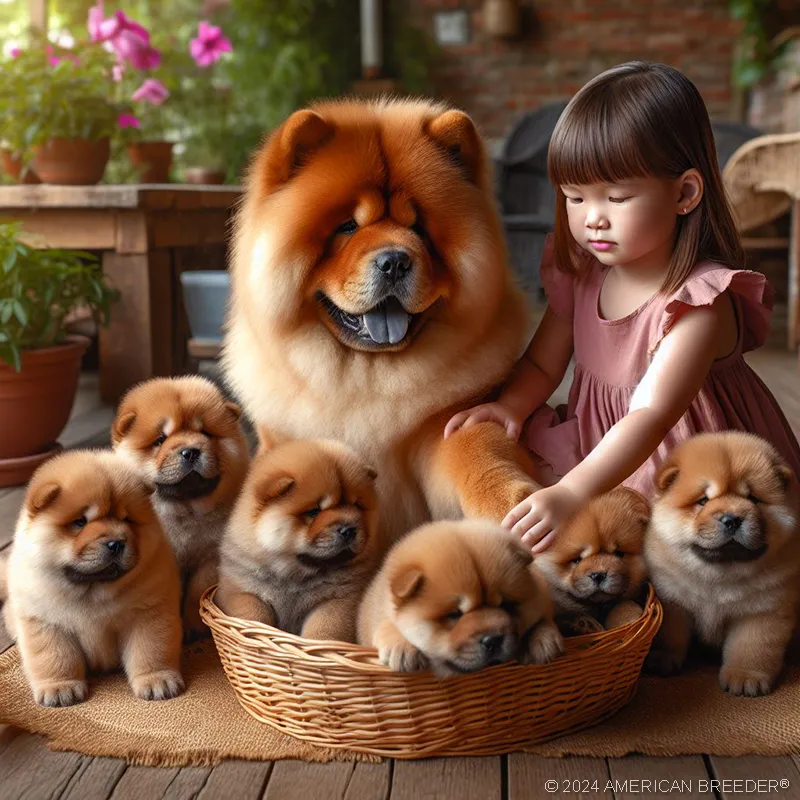 Welcome to the world of the Chow Chow Dog, a regal and enigmatic breed that will steal your heart with its charm and grace. Before you embark on this incredible journey of canine wonder, let's delve into the essence of the Chow Chow. Are you ready to learn about this majestic lion-like breed that has captivated dog lovers for centuries?
Welcome to the world of the Chow Chow Dog, a regal and enigmatic breed that will steal your heart with its charm and grace. Before you embark on this incredible journey of canine wonder, let's delve into the essence of the Chow Chow. Are you ready to learn about this majestic lion-like breed that has captivated dog lovers for centuries?
The Chow Chow Dog, also known as the "puffy-lion dog" or "poodle-dog," hails from the mystical lands of China. A breed of ancient lineage, they were originally bred for guarding temples and nobility, as well as for hunting and pulling carts. The Chow Chow is renowned for its dignified demeanor and aloof nature, making it a loyal companion to those who earn its trust.
Considerations to understand before choosing this breed:
Bringing a Chow Chow into your life is not to be taken lightly. Their loyalty is unwavering, but they require proper socialization and training from an early age to be well-adjusted and friendly. Due to their independent nature, they may not be suitable for first-time dog owners. However, for those who are willing to put in the time and effort to understand and cater to their needs, the Chow Chow will prove to be an affectionate and devoted companion.
Interesting and Fun Facts
Did you know that the Chow Chow's name may have originated from a Cantonese term "Chow Chow," which translates to "edible"? While they are not meant for consumption, this amusing name might have been given due to their versatile hunting skills and traditional use as working dogs in China.
Breed Background and History:
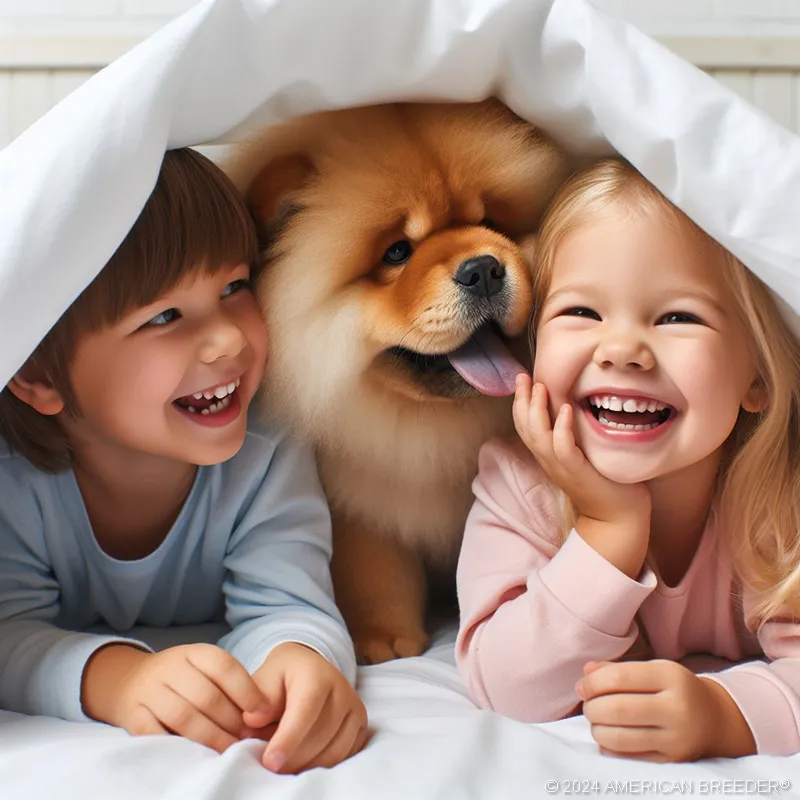 In the annals of history, the Chow Chow stands tall as a breed of cultural significance. Believed to be over 2,000 years old, their origins can be traced back to the Han Dynasty, where they served as royal companions and symbols of good fortune. Their iconic blue-black tongue and distinctive lion-like mane set them apart from all other breeds, making them a truly unique and captivating sight.
In the annals of history, the Chow Chow stands tall as a breed of cultural significance. Believed to be over 2,000 years old, their origins can be traced back to the Han Dynasty, where they served as royal companions and symbols of good fortune. Their iconic blue-black tongue and distinctive lion-like mane set them apart from all other breeds, making them a truly unique and captivating sight.
The Chow Chow's presence in Chinese art and literature is a testament to its historical importance. Ancient sculptures and paintings depict these regal canines, often portraying them alongside emperors and dignitaries. As symbols of loyalty and prosperity, they were revered as treasured members of the imperial court.
Purpose and Original Use
Originally bred for diverse roles, the Chow Chow excelled as a guard dog, protecting temples and palaces from intruders. Their majestic appearance and fierce loyalty made them a formidable presence, striking awe in the hearts of all who beheld them. Additionally, they were skilled hunters, assisting in tracking and retrieving game for their human companions.
Canine Societal Classifications
The Chow Chow's distinguished status in the canine world is recognized by various kennel clubs across the globe. Renowned organizations like the American Kennel Club (AKC), The Kennel Club (UK), and the Fédération Cynologique Internationale (FCI) have all acknowledged the Chow Chow as an exceptional breed deserving of admiration and respect.
Appearance
As you encounter the Chow Chow, you'll be greeted by a medium-sized dog with a sturdy and well-balanced build. Their deep chest, straight back, and muscular limbs convey strength and agility. With an elegant tail that curls over their back and their regal posture, they exude an air of confidence and dignity.
 Coat Type, Color Variations, and Patterns
Coat Type, Color Variations, and Patterns
One of the Chow Chow's most remarkable features is their dense double-coat, which comes in both rough and smooth varieties. The rough coat consists of a dense, straight outer coat and a soft, woolly undercoat. In contrast, the smooth coat has a shorter, sleeker appearance. Both coat types provide insulation against both heat and cold, reflecting their adaptability to different climates.
Chow Chows showcase an array of colors, including solid red, black, blue, cinnamon, and cream. The variety of coat colors only adds to their allure, making each individual unique and captivating.
Distinctive Features and Markings
The Chow Chow's appearance is further enhanced by a few distinguishing features, such as their large, deep-set almond-shaped eyes that exude an air of mystery. The crowning glory of their appearance is their blue-black tongue, a rare trait in the canine world. The reason behind this fascinating feature remains a mystery to this day, adding to their enigmatic charm.
Average Litter Size
When it comes to the joy of welcoming adorable Chow Chow puppies into the world, a typical litter consists of 3 to 6 charming bundles of fur. Each puppy, with its playful spirit and endearing personality, brings joy to any home lucky enough to have them.
Temperament and Personality
Underneath their majestic appearance lies a fascinating temperament that combines independence with unwavering loyalty. The Chow Chow can be aloof with strangers, but with those it holds dear, their affection knows no bounds. While not overly demonstrative, they form deep bonds with their family members and make devoted companions.
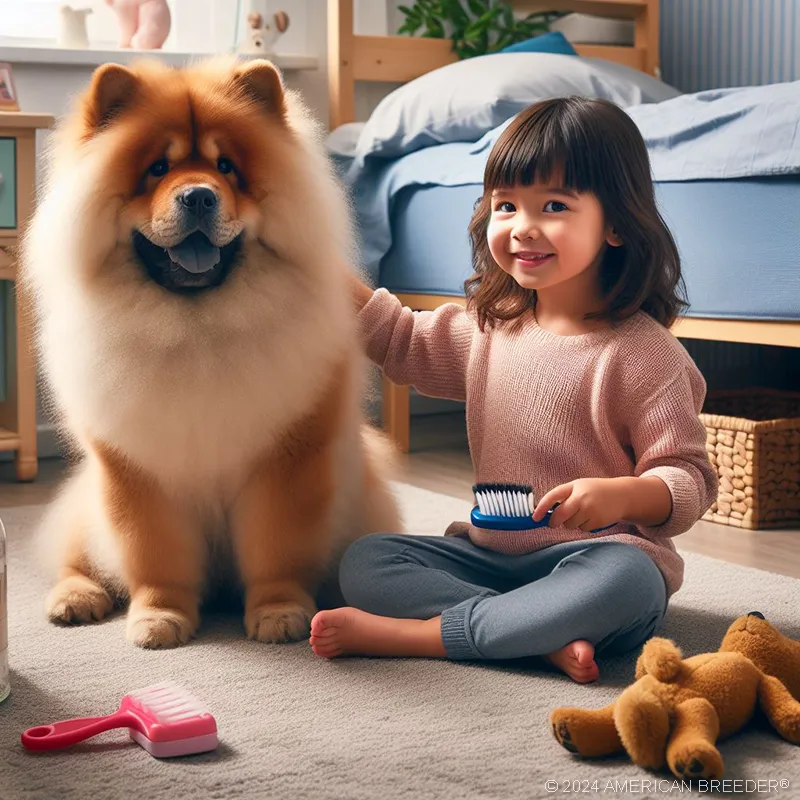 Energy Levels and Activity Requirements
Energy Levels and Activity Requirements
The Chow Chow's energy level can be described as moderate, making them content with daily walks and playtime. They enjoy leisurely strolls with their human companions and the occasional game of fetch in the backyard. Despite their regal demeanor, they have a playful side that delights in bonding with their family through fun activities.
Compatibility with Different Lifestyles and Family Dynamics
Chow Chows are well-suited for families with older children who can understand and respect their independent nature. Due to their dignified disposition, they may prefer a calm and serene household environment. While they may not be overtly affectionate, they demonstrate their love through loyalty and steadfast companionship.
Typical Behavior Issues
Like any breed, Chow Chows may exhibit behavior issues that require careful attention and training. These can include aggression and biting, excessive barking, digging, separation anxiety, resource guarding, and fear and phobias. With early socialization and consistent, positive training methods, these challenges can be managed effectively.
Trainability and Intelligence
With their sharp minds and eagerness to please, Chow Chows respond well to training that keeps their minds engaged. They excel in activities like canine obedience trials and tracking and scent work, where their intelligence shines through. Just like their royal history, they demand a certain level of respect and respond best to training approaches that are firm yet kind.
Recommended Training Approaches and Techniques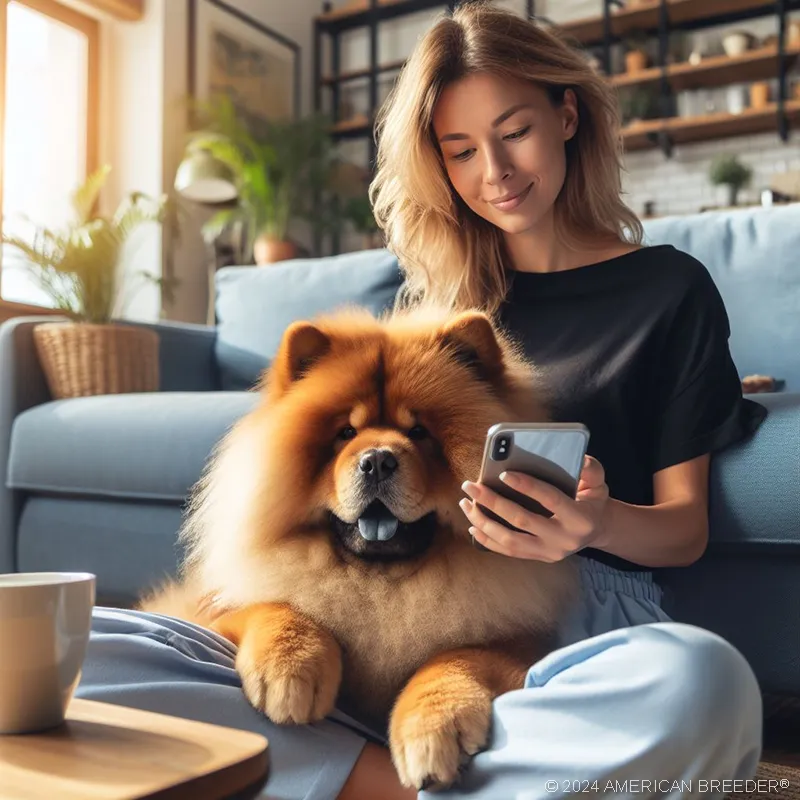 For training success with a Chow Chow, a balanced approach is essential. While they may challenge authority at times, they also respond well to positive reinforcement and rewards-based training. Early socialization and exposing them to various environments and experiences help them develop into well-mannered and confident adults.
For training success with a Chow Chow, a balanced approach is essential. While they may challenge authority at times, they also respond well to positive reinforcement and rewards-based training. Early socialization and exposing them to various environments and experiences help them develop into well-mannered and confident adults.
Versatility in Training and Skills
Chow Chows are multi-talented canines, excelling in various dog sports and activities. Their agility and endurance make them ideal candidates for agility training, where they navigate obstacle courses with grace and precision. Their keen sense of smell and tracking abilities make them adept at scent work, while their loyalty and intelligence make them exceptional candidates for therapy and service dog training.
Practical Considerations
Owning a Chow Chow Dog requires adequate space and a comfortable living environment. Whether you live in an apartment or a house, ensure there is enough room for them to roam and explore. A medium to large yard is ideal for them to stretch their legs and enjoy the outdoors. The Chow Chow's luxurious double coat demands regular grooming to maintain its beauty and health. Frequent brushing is essential, especially during shedding seasons, to prevent matting and keep their coat lustrous.
Daily Exercise Needs and Requirements
While the Chow Chow has a moderate activity level, they still need daily exercise to keep them mentally and physically stimulated. Daily walks and playtime in the yard are excellent ways to fulfill their exercise needs. Engaging in interactive games like fetch or puzzle toys can also keep their intelligent minds engaged while burning off some of their energy.
Affection Level and Desired Attention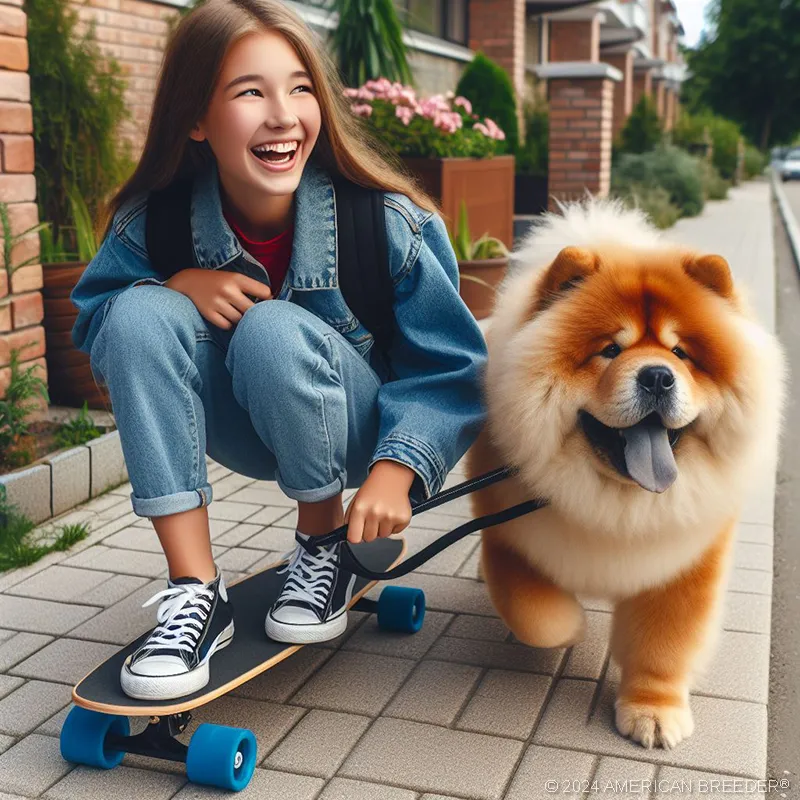 Chow Chows are not overly affectionate in the traditional sense, but they express their devotion through loyalty and companionship. They appreciate spending quality time with their human family, and once they form a bond, they become fiercely protective. Mutual respect and trust are the cornerstones of their relationship with their owners.
Chow Chows are not overly affectionate in the traditional sense, but they express their devotion through loyalty and companionship. They appreciate spending quality time with their human family, and once they form a bond, they become fiercely protective. Mutual respect and trust are the cornerstones of their relationship with their owners.
Friendliness Toward Strangers
The Chow Chow's reserved nature extends to strangers, making them cautious and aloof when meeting new people. Early socialization is crucial to help them become more accepting of unfamiliar faces. A calm and patient approach from strangers can foster a sense of trust and reduce their wariness.
Health and Care
Common Health Issues or Predispositions of the Breed
While Chow Chows are generally healthy dogs, like all breeds, they may be predisposed to certain health issues. Common concerns include hip dysplasia, an inherited condition that affects the hip joints, and entropion, a condition where the eyelids roll inward, causing irritation. Regular check-ups with a veterinarian and maintaining a balanced diet are essential for their overall well-being.
Allergies and Specific Dietary Considerations
Chow Chows can be sensitive to certain foods and environmental allergens. Keeping an eye out for any signs of allergies, such as skin irritations or digestive issues, can help identify potential triggers. Providing a balanced and high-quality diet tailored to their specific needs can support their health and vitality.
Lifespan and Longevity Expectations With proper care and a healthy lifestyle, the Chow Chow can live a long and fulfilling life. On average, their lifespan ranges from 9 to 15 years, though individual variations may occur. Regular exercise, a nutritious diet, and routine veterinary care can contribute to their longevity.
With proper care and a healthy lifestyle, the Chow Chow can live a long and fulfilling life. On average, their lifespan ranges from 9 to 15 years, though individual variations may occur. Regular exercise, a nutritious diet, and routine veterinary care can contribute to their longevity.
Grooming Requirements Based on Coat Type and Size
Grooming is an essential aspect of Chow Chow care, with coat maintenance being particularly crucial. The rough-coated variety may require more frequent brushing to prevent matting, while the smooth-coated variant needs regular grooming to keep its coat shiny. Regular nail trimming, teeth brushing, and ear cleaning are also part of their grooming routine.
Exercise Needs and Recommendations for Physical and Mental Stimulation
As a breed with moderate activity levels, the Chow Chow benefits from daily exercise to prevent boredom and maintain good health. Engaging them in mentally stimulating activities like puzzle toys or training sessions can keep their intelligent minds sharp. Additionally, interactive playtime with their owners strengthens the bond between the dog and its family.
Nutrition and Feeding Guidelines
Feeding a balanced and nutritious diet is crucial for the Chow Chow's overall health and well-being. High-quality commercial dog food that meets their specific age, size, and activity level is a good starting point. However, consulting with a veterinarian for personalized feeding recommendations is essential, as individual Chow Chows may have unique dietary needs.
Socialization and Compatibility
 Interaction with Children, Other Pets, and Strangers
Interaction with Children, Other Pets, and Strangers
Proper socialization from an early age is vital to ensure a well-adjusted and friendly Chow Chow. With their family, including children, they can be affectionate and gentle. However, due to their independent nature, supervision is necessary when interacting with younger children to avoid any misunderstandings.
With other pets, early introductions and positive interactions are key to fostering harmony in multi-pet households. While they may not be as naturally sociable as some breeds, with proper socialization, they can learn to coexist peacefully with other animals.
Socialization Needs and Tips for Proper Socialization
Early and ongoing socialization is essential to help the Chow Chow develop into a confident and well-mannered adult. Exposing them to various environments, experiences, and different people and animals during their puppyhood will help them feel more at ease in different situations.
Living Arrangements and Environment
Suitability for Different Living Arrangements
The Chow Chow can adapt to various living arrangements, but they thrive best in homes with sufficient space for them to move around comfortably. Whether it's a spacious house with a yard or an apartment with regular outdoor access, providing a suitable living environment is essential for their well-being.
Climate Considerations and Adaptability
With their double coat, Chow Chows are well-adapted to colder climates, as their fur provides excellent insulation. However, they may require extra care during hot weather to prevent overheating. Ensuring they have access to shade, water, and avoiding strenuous activity during the hottest parts of the day can help them stay comfortable.
Training and Obedience
 Basic Obedience Training and Commands
Basic Obedience Training and Commands
Chow Chows respond well to positive reinforcement-based training, where rewards and praise are used to motivate and encourage good behavior. Basic commands like sit, stay, come, and heel should be introduced early in their training. Consistency and patience are key, as they may test boundaries from time to time.
Advanced Training or Specialized Activities Suited for the Breed
Their intelligence and problem-solving abilities make Chow Chows ideal candidates for advanced training and specialized activities. Engaging them in activities like agility training, where they navigate through obstacle courses with precision and grace, can be a rewarding experience for both the dog and their owner.
Behavioral Challenges or Specific Training Considerations
While Chow Chows are highly trainable, they can also display stubbornness and independence. It's crucial to establish yourself as a consistent and confident leader from the beginning of their training. Avoid using harsh punishment or negative training methods, as these can lead to resistance and trust issues.
Overall Summary
The Chow Chow Dog is an enchanting breed with a rich history and captivating appearance. From their origins in ancient China to their present-day charm, they have held a special place in the hearts of dog lovers around the world. Their dignified temperament and loyalty make them a unique and cherished companion.
 Chow Chows thrive in environments with loving and committed owners who understand and cater to their independent nature. Proper socialization and positive reinforcement-based training are essential in nurturing their well-rounded personalities. With their intelligence and adaptability, they excel in various dog sports and activities, forging deeper bonds with their owners along the way.
Chow Chows thrive in environments with loving and committed owners who understand and cater to their independent nature. Proper socialization and positive reinforcement-based training are essential in nurturing their well-rounded personalities. With their intelligence and adaptability, they excel in various dog sports and activities, forging deeper bonds with their owners along the way.
As you venture into the world of Chow Chow ownership, remember to prioritize responsible ownership and ethical considerations. Whether adopting from a shelter or choosing a reputable breeder, making informed decisions ensures the well-being of your furry friend.
Conclusion
Congratulations on completing this captivating journey through the wonders of the Chow Chow Dog breed! The majestic charm, loyalty, and enigmatic allure of the Chow Chow make them a truly extraordinary companion for those who appreciate their regal nature.
Remember, being a responsible dog owner is a lifelong commitment, and a Chow Chow will reward you with a lifetime of loyalty and love. Embrace the journey with an open heart, seeking expert guidance when needed, and providing a loving, suitable home for your Chow Chow.
So, are you ready to welcome the puffy-lion dog into your life and heart? Let their majestic presence and loving spirit light up your world, for you'll find in them a lifelong friend and an irreplaceable member of your family.
Chow Chow Dog Quick Reference Guide
Breed Background: Origin: China | Breed Purpose: Guarding, Hunting | AKC Class: Non-Sporting | Year Recognized by AKC: 1903
 Appearance: Size: Medium | Weight: 45-70 pounds | Coat Type: Double-coated | Colors & Patterns: Red, Black, Blue, Cinnamon, Cream | Distinctive Features: Lion-like mane, blue-black tongue
Appearance: Size: Medium | Weight: 45-70 pounds | Coat Type: Double-coated | Colors & Patterns: Red, Black, Blue, Cinnamon, Cream | Distinctive Features: Lion-like mane, blue-black tongue
Temperament: Energy Level: 3 | Friendliness to Pets: 2 | Friendliness to Strangers: 2 | Trainability: 3 | Playfulness: 2 | Frequent Barker: 4 | Chase Instincts: 3 | Sense of Smell: 3 | Drive to Hunt: 3
Health & Care: Health Issues: Hip Dysplasia, Entropion | Lifespan: 9-15 years | Grooming Difficulty: 4 | Exercise Needs: Moderate
Socialization: Interaction with Children: Cautious, best with older kids | Interaction with Pets: Better with early socialization | Interaction with Strangers: Reserved | Ease of Training: Moderately difficult
Suitable Living Arrangements: Apartment: Yes | House: Yes | Rural Area: Yes | Yard Size Requirements: Medium to Large Yard
Training & Obedience: Trainability: 3 (Moderate) | Intelligence: 4 (High) | Obedience: 3 (Moderate) | Problem-Solving: 3 (Limited) | Easily Stimulated: 2 (Low) | Focus Level: 3 (Moderate) | Easily Distracted: 2 (Low)
Financial Planning: Typical Price Range: $1,500 - $4,000 | Initial Expenses: Vaccinations, Training | Ongoing Annual Expenses: Food, Grooming
Breeding: Reproductive Maturity: 18-24 months | Litter Frequency: 1-2 per year | Litter Size: 3-6 puppies | Stud Cost: Varies | Breeding Challenges: Prone to difficulties during whelping.
Did You Enjoy this Article? Share it and Help Us Spread the Word!
If you found this article helpful, we'd appreciate it if you could share it with your friends or link to it from your website, blog, or group! You can also use the convenient social share tabs on the left side of the screen to instantly share this page to your social media feed. For more ways to support and promote the American Breeder Community, visit our Share & Promote Together page for social media posts and memes you can copy and share. Your support means the world to us!
Disclaimer: The information provided in this article is for general informational purposes only and does not constitute legal, medical, financial, or professional advice. While we strive for accuracy, we make no representations or warranties regarding the completeness, accuracy, reliability, or suitability of the information. Please consult with a professional before making decisions based on the content provided. American Breeder Inc. assumes no responsibility for any errors or omissions or for the results obtained from the use of this information.
